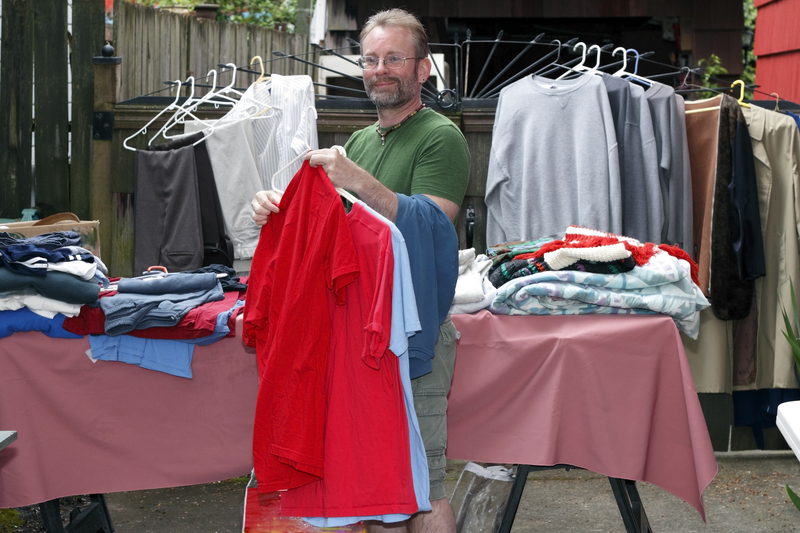Easy Ways to Eliminate Plastic From Your Kitchen
Posted on 30/01/2025
Plastic pollution is one of the most pressing environmental issues of our time. Single-use plastics, in particular, contribute significantly to pollution and are harmful to wildlife. One practical and impactful way to combat this issue is by reducing plastic use in our daily lives. The kitchen, as the heart of many homes, is an excellent place to start. This comprehensive guide will take you through easy ways to eliminate plastic from your kitchen.
Why Reduce Plastic in the Kitchen?
Kitchens are hotspots for plastic use. From food packaging to kitchen tools, plastic is omnipresent. Reducing plastic not only lessens environmental impact but also improves your health. Many plastics contain harmful chemicals like BPA, which can leach into food and drinks. By minimizing plastic, you decrease your exposure to these substances.

Assessing the Current Plastic Use
Before making changes, take stock of your current plastic use in the kitchen. Make a list of plastic items you regularly use and categorize them into single-use and reusable but still plastic. This will help you identify areas for improvement and tackle them systematically.
Reusable Shopping Bags
Plastic bags are one of the most common single-use items. Replacing them with reusable shopping bags can significantly cut down on plastic waste. Options include:
- Cloth bags: Sturdy and washable, they are perfect for groceries.
- Mesh bags: Ideal for produce, they allow fruits and vegetables to breathe.
- Tote bags: Versatile and fashionable, they can be used for various shopping trips.
Switching to Glass Containers
Plastic containers are convenient, but they're not the best for the environment or your health. Glass containers are a fantastic alternative. They're durable, non-toxic, and don't retain stains or odors. Additionally, glass is recyclable, making it an eco-friendly choice.
Non-Plastic Food Storage Options
Storing food often involves using plastic wrap or zip-lock bags. Here are some sustainable alternatives:
- Beeswax wraps: These wraps are made from cotton infused with beeswax and can be used to cover bowls or wrap food items.
- Silicone food covers: These stretchy lids come in various sizes and can cover bowls, pots, and other containers.
- Fabric bowl covers: Made from cloth, these covers are great for covering dishes and can be easily washed and reused.
Eco-Friendly Utensils and Cookware
Plastic utensils and cookware can be replaced with eco-friendly options. Wooden, bamboo, or stainless steel utensils are excellent choices. They are durable, easy to clean, and add a natural aesthetic to your kitchen. For cookware, consider cast iron, stainless steel, or ceramic, which are long-lasting and free from harmful chemicals.
Investing in a Water Filtration System
Bottled water is a significant contributor to plastic waste. Investing in a good water filtration system allows you to drink clean, safe water without the need for plastic bottles. Options include:
- Pitcher filters: Convenient and easy to use, these filters fit into your refrigerator.
- Faucet filters: Attached directly to your tap, they provide filtered water on demand.
- Under-sink filters: These systems are installed under your sink and offer a high flow rate and long-lasting filtration.
Buying in Bulk and Using Refill Stations
Buying in bulk significantly reduces the amount of plastic packaging. Many stores offer bulk bins where you can fill your containers with items like grains, nuts, and spices. Also, seek out refill stations for items like oils, vinegars, and cleaning supplies. These stations often allow you to bring your own containers, eliminating single-use packaging.
Choosing Sustainable Cleaning Supplies
Many cleaning supplies come in plastic containers. Opt for eco-friendly alternatives that come in sustainable packaging or allow for refills. Consider making your own cleaning solutions using ingredients like vinegar, baking soda, and essential oils, which can be stored in reusable glass or stainless steel bottles.
Reducing Plastic in Personal Care Products
Personal care products such as dish soap and hand washes are often packaged in plastic. Look for brands that offer plastic-free options or sell refills. Solid dish soaps and bar hand soaps are excellent alternatives and often come in minimal packaging.
Supporting Plastic-Free Brands
Support brands that commit to reducing plastic in their products and packaging. Many companies are now offering eco-friendly alternatives that use minimal or no plastic. By choosing these brands, you encourage a market shift towards sustainability.

Being Mindful of Takeout and Leftovers
Takeout food often comes in plastic containers. When ordering takeout, request non-plastic packaging or consider bringing your own containers. For leftovers, use your own reusable containers, which are more environmentally friendly and safer for food storage.
Next Steps for A Plastic-Free Kitchen
Embracing a plastic-free lifestyle in your kitchen may take time, but each small step contributes significantly to reducing pollution. Start by making simple swaps and gradually replace more items. Involve your family and educate them on the importance of reducing plastic. Finally, always keep an eye out for new and innovative ways to make your kitchen more sustainable.
By following these easy ways to eliminate plastic from your kitchen, you take a crucial step towards a healthier environment and a healthier you.










